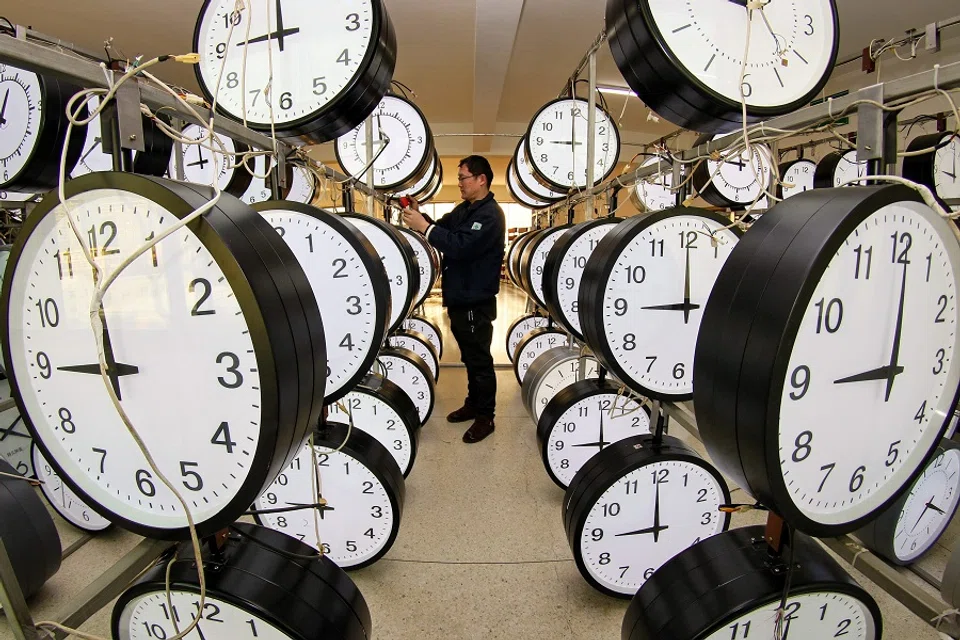Chinese manufacturing must grow in strength, not just size
China's manufacturing sector is known to be the "world's factory", and its scale is unrivalled. However, Chinese academic Chen Hongbin notes that this manufacturing behemoth is not as strong as it seems.

China's manufacturing industry continues to face the challenge of being large but weak. The annual Central Economic Work Conference (convened by the Central Committee of the Chinese Communist Party and the State Council) announced in mid-December 2020 that China will bolster the autonomy of and command over the nation's industrial and supply chains, as the latter's security and stability is the foundation for building a new development paradigm.
China as the 'world's factory'
Since its reform and opening up, China's economy has grown tremendously, especially its manufacturing industry which has cemented China's position as the "world's factory". Industry value added has gone up from 12 billion RMB in 1952 to over 30 trillion RMB in 2018 - that is a growth of about 971 times in real terms, and China's position is likely to remain unchallenged for a long time to come.
With long-term rapid industrial growth, China's share of the global manufacturing sector is getting larger. According to figures from the World Bank, China accounted for just 2.7% of the global manufacturing sector in 1990, ranking ninth in the world; in 2000, its share rose to 6.0%, putting it at number four; in 2007, 13.2% and number two; and in 2010, 19.8% and world number one, where it has remained ever since.
The industrial sector accounts for over a third of China's GDP and is a strong pillar of its GDP growth, pushing China's economic ranking upward from 11th in 1978 to second in 2010, and accounting for over 16% of global GDP in 2019. The rapid strengthening of China's industrial economy has allowed China to make a historic leap from "standing up" to "getting rich and strong", and has contributed to China's growing influence on the world stage.

According to US research institute IHS Markit, the total global manufacturing output in 2010 was US$10 trillion, of which China accounted for 19.8%, marginally higher than the US's share at 19.4%. Before that, the US had been leading the global manufacturing sector since 1895.
China's share of this particular pie far exceeds the proportion of its population and GDP in the world. China's manufacturing value added (MVA) is practically that of the US, Germany, and Japan combined...
Economic history expert Emeritus Professor Nicholas Crafts of the University of Warwick said this represents a fundamental change in global labour distribution that is unlikely to be reversed in the short term. And developments since have borne out this forecast: in 2019, China's manufacturing value added (MVA) had gone up to 28.5% of the global figure, while the US's share slipped to 11%.
China's share of this particular pie far exceeds the proportion of its population and GDP in the world. China's MVA is practically that of the US, Germany, and Japan combined, which is sufficient evidence that the scale of China's manufacturing sector is far ahead of all other countries. Not even those biased against China would be able to question this ironclad fact.
Productivity and competitiveness remain the US's strengths
However, back in 2011, IHS Global Insight (now Economics and Country Risk from IHS Markit) already noted that the US's edge in productivity is obvious - its manufacturing output in 2010 was only slightly lower than China's, but it had 11.5 million workers in its manufacturing sector, while China had 100 million.
And that is the problem: there is no doubt that China has become a major manufacturing country, but it is far from a manufacturing powerhouse. Apart from the enormous gap between China and the US in terms of manufacturing output per capita as shown in the figures above, China's large but feeble manufacturing sector is shown in several other areas.
... there is still a clear gap between China and the first- and second-tier countries in indicators such as "globally recognised brands" and the "global share of basic industries value added".

The Chinese authorities are aware of this. On 25 December 2020, an annual report on China's manufacturing power development index was released in Beijing by the Chinese Academy of Engineering of the State Council. The report showed that in 2019, China ranked fourth in this index.
Looking at the core areas of competitiveness, China is not yet among the second tier of manufacturing powers, and there is still a clear gap between China and the first- and second-tier countries in indicators such as "globally recognised brands" and the "global share of basic industries value added". China has released this report since 2015, and it has become an authoritative document in providing an objective assessment of the overall standard of China's manufacturing industry.
The rankings of China, the US, Germany, Japan, the UK, France, Korea, Brazil, and India did not change from 2018 to 2019 in the report, with the US in the lead in the first tier; Germany and Japan firmly in the second tier; and China, Korea, France, and the UK in the third tier, with China in the lead.

The report said the MVA as a percentage of gross manufacturing output reflects the role and state of development of a country's manufacturing sector. From 2012 to 2019, China's MVA proportion to gross manufacturing output has hovered around 20%, which is comparatively lower than that of the US and Germany, whose figures are above 30%.
The figures show that in 2019, the Chinese manufacturing sector's profit margin went down by 0.96 percentage points, making it more difficult for companies to operate and leading to less investment in manufacturing research and development. The report noted that this led to another drop in China's score for sustainable development since 2017, which gained the attention of the Chinese government.
In recent years, the share of China's MVA in its GDP has shown a downward trend amid some movement, particularly in 2019 when it accounted for only 27.17%, the lowest since 2012. In line with this, the growth rate of large industrial enterprises (scale of enterprise as designated by the Chinese state) has also dropped from 10.0% in 2012 to 6.0% in 2019, moving into a period of low to medium growth.
China is currently in the late stages of industrialisation, and manufacturing needs to develop faster. In 2019, China's basic industries value added continued to account for a smaller share of the global figure, with output of traditional basic products such as bearings and dashboards far lower than that of the US, while its exports of basic equipment such as computer numerical control (CNC) tools is far lower than Europe and the US. China's weak industrial foundation is becoming increasingly obvious.
If Huawei falls out of the top 100, that would put China's manufacturing sector in a more awkward position than ever.

The report noted a clear drop in investment on research and development in China's manufacturing sector in 2019, down 0.87 points to just 1.45%, lower than the national average across the board, which in turn showed a slight increase.
Lack of strong brands
The number of Chinese well-known brands is also completely disproportionate with China's enormous size, and this is another key indicator of China's weak manufacturing industry. So far, Huawei is the only Chinese brand that has made it to Forbes' list of the world's top 100 most valuable brands, but it has fallen outside the top 90 brands in the past couple of years. With the US ban on chip supplies, Huawei's smartphone output in the third quarter of 2020 fell by 21%, and it gave up its position as the world's number one smartphone maker. If Huawei falls out of the top 100, that would put China's manufacturing sector in a more awkward position than ever.
... only about 3% of operating systems in China's domestic market is domestically produced
It is common knowledge that in recent years, China's chip imports have far outstripped its oil imports to become its top import product, and US sanctions have caused China a lot of pain. The target of Made in China 2025 is to have 70% of semiconductors domestically produced by 2025, but looking at the current situation, this will be a tall order, which is why the Chinese government has rolled out this industrial policy and is sticking to it.
In recent years, China has repeatedly emphasised that it is the only country in the world with every category of industry listed by the UN. Of course, this can be seen as having built an independent and complete industrial entity, but it is nothing to be overly arrogant about, because China has to quickly get out of the rut of just "being big".
While China holds a monopoly on sectors such as rare earth magnetic products, it is still being choked out of key sectors like chips and software. For instance, only about 3% of operating systems in China's domestic market is domestically produced; this is the tough situation that needs to be changed in China's manufacturing sector, which must grow its strength besides its scale.



![[Photos] Fact versus fiction: The portrayal of WWII anti-Japanese martyrs in Taiwan](https://cassette.sphdigital.com.sg/image/thinkchina/3494f8bd481870f7c65b881fd21a3fd733f573f23232376e39c532a2c7593cbc)

